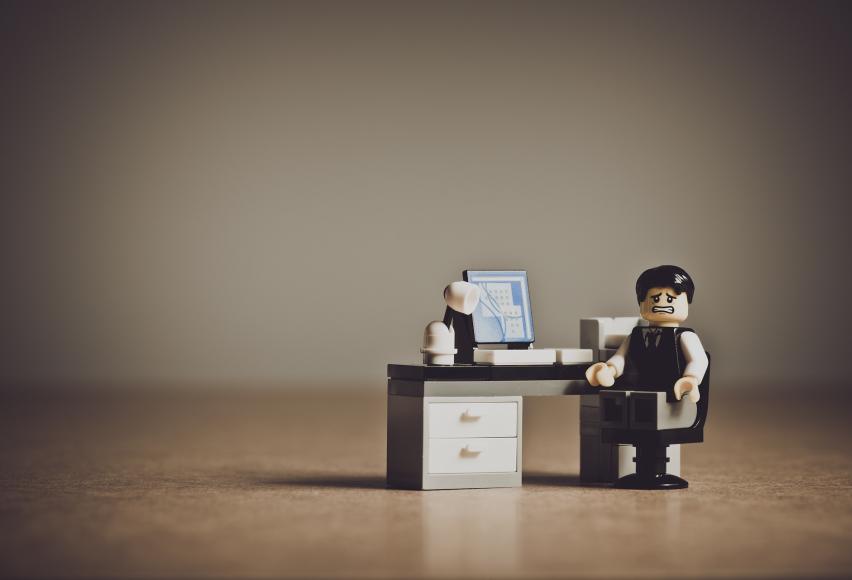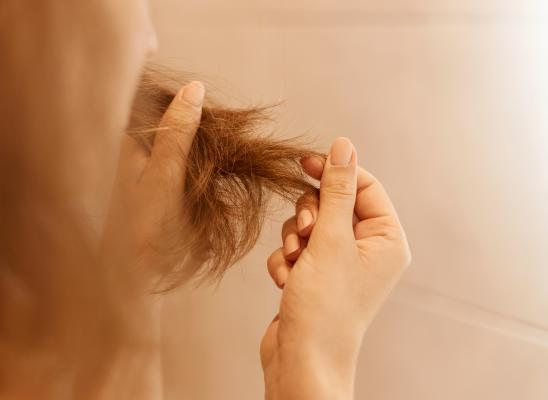Emotional Avoidance and Hair Pulling

Online test
Find out the severity of your symptoms with this free online test
Avoidance…it’s something we all do. It’s our go-to when we just don’t want to do something. But there’s avoidance of something just unpleasant and then there’s avoidance of emotions that can create distress. In this TrichStop.com webinar, Dr. Vladimir Miletic talks about emotional avoidance and how avoiding difficult emotions and memories may lead to hair pulling.
What Avoidance Is and Why We Do It
Emotional avoidance occurs when a person is unwilling to deal with certain private experiences such as body sensations, emotions, or thoughts and takes steps to alter the form or frequency of these events and the contexts in which they occur. Dr. Miletic frames this behavior as the things a person is willing to do to minimize or change their experience so they don’t have to deal with it.
We use avoidance behaviors all the time. Some are relatively benign. Others, like hair pulling, can have significant, often unintended, consequences. So, the question is, why do we avoid if we know that it causes problems?
Dr. Miletic turns to George Kelly’s personal construct theory and choice corollary for answers. When faced with something difficult, people find themselves at a crossroads. They can choose to face the problem or difficult situation, or they can choose to avoid it. While avoidance has its own set of problems, it’s actually the logical choice when something is just too unpleasant. It feels better at the moment, relieving the worry and stress of having to deal with the issue directly. Avoidance gives you better control over events in your life. We don’t necessarily choose what feels good. We choose what brings us clarity and what allows us to act in ways that are predictable and reliable.
It’s important to note that choice isn’t always a conscious one. Sometimes we make choices on a subconscious level which can be more efficient and can avoid even having to think about what’s unpleasant.
The assumptions we make about emotions also drive how we choose to deal with them. The implicit assumptions we have are rooted in family, culture, and previous experiences. They determine how we conceptualize feelings and what options we see for coping. Understanding the implicit assumptions you have can help you to understand why you avoid certain things.
Even though it serves a purpose, avoidance isn’t without its consequences. In the short term, avoidance brings some relief. Whew! You don’t have to deal with what you were trying to avoid. And, there’s an element of gratification. You avoided the issue. Over time, avoidance inevitably leads to more avoidance. What you’re trying to avoid only gets worse. Avoiding it doesn’t make it go away. Avoidance also robs you of the opportunity to really get to know yourself. It masks important experiences from your conscious mind.
How Avoidance Leads to Hair Pulling
The beginnings of avoidance are found in distress. When you experience distress, it triggers strong emotional responses. This distress can be external, like having an argument with a friend. Distress can be internal, as when you have an unpleasant memory. Your body responds and you start to experience uncomfortable sensations or feelings. This discomfort in turn, activates those implicit assumptions you have. You’re at that crossroads where you choose to face the distress or avoid it. Avoidance seems to the best choice. Somewhere along the way, hair pulling became part of your avoidance behaviors. The hair pulling results in successful avoidance and feelings of relief and gratification, reinforcing the behavior. You may also experience other feelings such as guilt or shame but the hair pulling validates the cycle and will be repeated.
Breaking the Cycle
Breaking this self-reinforcing cycle is difficult. Eliminating distress is not realistic. It’s an unavoidable part of life, despite what your assumptions might try to convince you otherwise. Avoidance reinforces the idea that distress is harmful.
Dr. Miletic suggests that the missing piece and more realistic point to break the cycle is where assumptions are activated. Implicit assumptions guide the response to distress. If you change the assumptions, you can change the course of the cycle.
Habit Reversal Therapy (HRT) is a behavioral intervention and does not generally include cognitive work to address assumptions. It only addresses the behavior. What if there was something that could tackle the assumptions?
The Value of Acceptance
Acceptance is the antidote to avoidance. Acceptance is a willingness to seek out our internal experiences and being open to all aspects of one’s experience. Acceptance doesn’t mean that you just have to make peace with or just accept assumptions that are not helpful. On the contrary. Acceptance means that you can accept and see your assumptions clearly. It is this clarity that is the precursor to change. You cannot change what you don’t recognize. And, without acceptance change is highly unlikely. When you are open to the experience of distress, you can use it in ways that are constructive. You start seeing patterns and take steps to break the cycle of hair pulling.
How To Recognize and Challenge Your Implicit Assumptions
The first step is to look at your behavior patterns. What are the avoidance behaviors you use? Identify as many as you can.
Next, think about what your implicit assumptions are. How do they affect how you deal with difficult experiences? This step sounds easy but it’s challenging. So many of our choices are made subconsciously and may not be readily apparent. Take your time and really let yourself fully explore your actions and the assumptions you hold.
Another important step is to allow yourself to be open to difficult experiences. This doesn’t mean you need to suffer incessantly or that you have to just accept that you’ll always have this problem. It means that you allow yourself to look at your distress and not feel shame or guilt. Instead, allow yourself to just see it as fact of your experience. You’re allowing yourself to be emotionally open and vulnerable in the moment.
Once you are able to see your implicit assumptions clearly, you can begin to rewrite the narrative and find healthy strategies to cope. Emotions can be seen as information rather than a source of distress and suffering. Experiencing emotions is a learning experience. Instead of fearing and avoiding difficult experiences, allow yourself to see what they can teach you. What wisdom can you take from them? When you can reframe something in a more positive way, it changes the way you think, feel, and act. And when that happens, you open the door to change and healing.
Ultimately, to eliminate avoidance behavior like hair pulling, you have to allow yourself to be open to the difficult experiences and willing to risk doing something different. When you open yourself up to deal with the hard emotions and experiences, you open yourself to the possibility of growth and change. This is a difficult journey to take alone. Working with a therapist can help guide you through this journey of growth and change.
Subscribe to the TrichStop.com newsletter and subscribe to the YouTube channel to receive notifications about the next webinar.
Online test
Find out the severity of your symptoms with this free online test
Start your journey with TrichStop
Take control of your life and find freedom from hair pulling through professional therapy and evidence-based behavioral techniques.
Start Now



